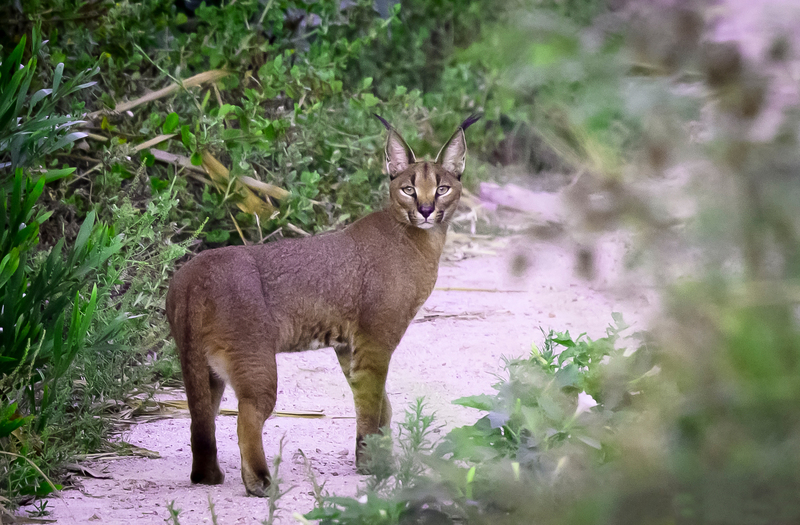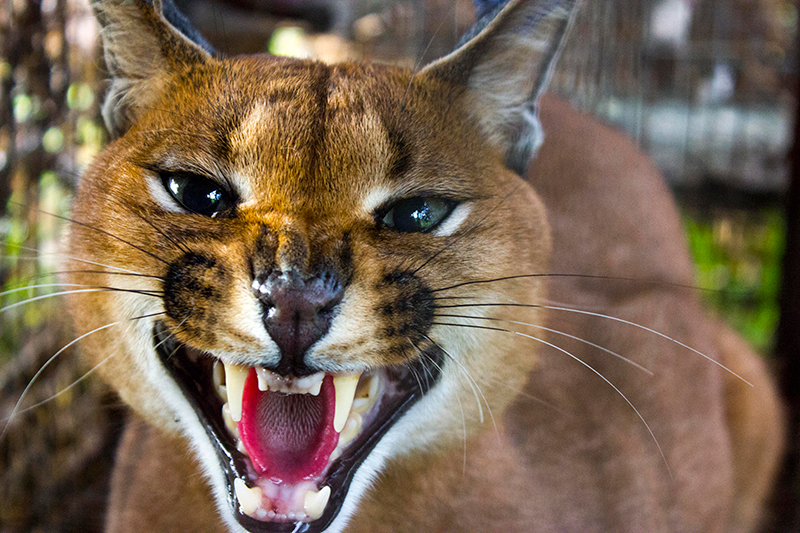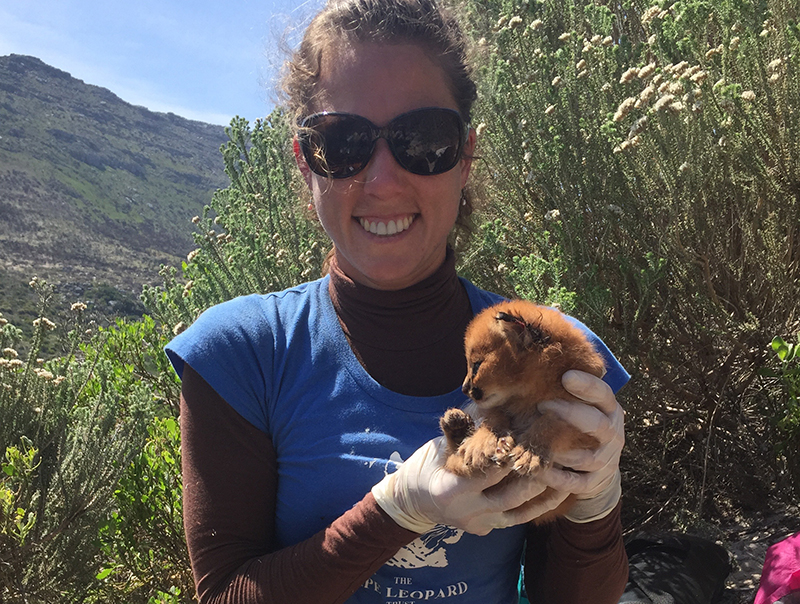Rat poison threat to city’s peri-urban wildlife
14 May 2019 | Story Helen Swingler. Read time 7 min.
Urban rat poisons are spilling over into Cape Town’s natural environment, threatening species such as caracal, mongoose, otter and owl.
Anticoagulant rat poisons are infiltrating Cape Town’s peri-urban wildlife food chains, according to a team of University of Cape Town (UCT) researchers in the Institute for Communities and Wildlife in Africa (iCWild).
The team’s recent paper, in the journal Science of the Total Environment, identified six predator species at risk: caracal, Cape clawless otter, Cape Eagle Owl, large spotted genet, honey badger and water mongoose. Others are likely affected as well.
These animals already face challenges that include increasing habitat loss, vehicle collisions, poachers and fire, said lead author Dr Laurel Serieys, a postdoctoral research fellow in iCWild.
The study was conducted within and around Cape Town’s Table Mountain National Park, and is believed to be the first of its kind in South Africa. It measured the presence and concentration of rat poison compounds in liver and blood samples from 41 animals, with a special focus on caracal as part of the Urban Caracal Project.

At 92%, exposure to rat poisons was highest for caracal. Overall, they found 81% exposure across seven species tested. The predators aren’t eating the poisons directly. Rather, the poisons are designed to work slowly in their target species, rats, who become sick over a period of days and end up as easy prey for predators.
“We detected at least one of the four most toxic rat poison compounds, all available in over-the-counter products, in six of the seven species tested.”
“We detected at least one of the four most toxic rat poison compounds, all available in over-the-counter products, in six of the seven species tested,” said Dr Jacqueline Bishop, lead supervisor on the project.
Caracals living in or near vineyards had the highest exposure to rat poisons but the route to exposure is unclear.
“Vineyards in Cape Town don’t use rat poisons to protect their vines, but they do host restaurants, spas and hotels and occur adjacent to dense residential areas where rat poisons are widely used. Caracals regularly hunt in vineyards and it is here that they are likely to be exposed to poisoned rats, in and around urban structures,” she said.
Non-target species conundrum
The researchers focused their poison testing on caracal but were also able to opportunistically test several other species that had died after being hit by cars, including Cape clawless otters, large spotted genets, honey badgers, water mongoose, small grey mongoose and the Cape Eagle Owl.
The fact that these species use different habitats shows that rat poisons may profoundly impact many different species.
“It also suggests, in the case of otters, that polluted water run-off from urban areas could transport the poisons into Cape Town’s waterways and the aquatic food chain,” said collaborator Dr Nicola Okes.
The results of the study echo the growing pesticide threat to biodiversity globally. Poisons used in and around urban and agricultural areas often kill species indiscriminately and can impact the ecosystem.
“There is mounting evidence globally that rat poisons are a critical threat to wildlife, including threatened and endangered species.”
“There is mounting evidence globally that rat poisons are a critical threat to wildlife, including threatened and endangered species. To really understand this problem locally has taken support from the public, from SANParks and the City of Cape Town in reporting the locations of animals hit by cars so they could be included in our study,” said Bishop.
Serieys, a graduate of the University of California Los Angeles, is doing her postdoc with Bishop. The two met in 2013 during a conservation genetics workshop in the Kruger Park and discussed her dream to work on urban cats in South Africa.
Together they developed the framework for the Urban Caracal Project, making use of multiple methods to understand how these predators persist in the rapidly urbanising landscape of Cape Town.

“The caracal is one of the flagship species for iCWild,” said Professor Justin O’Riain, director of the institute.
“It is one of only a few medium-sized wildlife species that persist in and around urban and rural landscapes, benefiting from the absence of apex predators and access to prey that feed on the abundant food in these environments. Unfortunately, this bounty is coming at a cumulative cost.”
Rat poisons freely available
Rat poisons are widely available in supermarkets and hardware stores; and as an option for pest control are often the only product available. Mechanical traps are considerably harder to find.
Bishop noted that there is also widespread public misconception about rodent poison boxes, seen commonly in areas around the city: The rats do not enter the bait box, eat the poison and immediately die. They leave the bait box before the anti-coagulant actions of the poisons kick in, allowing them to re-enter the food chain.
One of the most significant findings of the study is that exposure occurs at all ages. Several lactating female caracals were sampled in the study and found to be exposed to rat poisons, suggesting that kittens may be exposed through their mother’s milk.
The bigger picture
The Urban Caracal Project has grown into a large-scale research programme that sparks a lot of community interest, said Bishop. Thanks to the project’s public outreach efforts, members of the community can interface directly with the researchers and contribute to their work by reporting caracal sightings and learning about the project’s development through its Facebook page.
The project has also garnered international interest from researchers wanting to contribute to the research team’s efforts to identify the many threats to Cape Town’s caracals and strategise effective conservation of these elusive cats.
The researchers hope that their study’s findings will stimulate a dialogue on how to reduce environmental contamination by rat poisons and other toxins, and help pinpoint directions for targeted mitigation.
“As consumers, we need more eco-friendly alternatives to rat poison and the simplest solution is well within everyone’s reach.”
“As consumers, we need more eco-friendly alternatives to rat poison and the simplest solution is well within everyone’s reach – improve the management of waste which attracts rats in the first place.”
She added: “Coming up with solutions is relatively straightforward, but implementing solutions, changing policy, changing minds, in this case about waste management and the sloppy use of rat poisons, these are the challenges that led to our forming the interdisciplinary Institute for Communities and Wildlife in Africa.”
 This work is licensed under a Creative Commons Attribution-NoDerivatives 4.0 International License.
This work is licensed under a Creative Commons Attribution-NoDerivatives 4.0 International License.
Please view the republishing articles page for more information.










